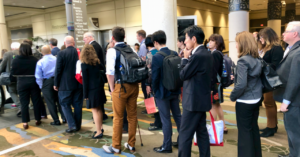Lining up new developments in the treatment of GVHD
January is inevitably a month where several worlds collide for us.
There might be initial data from SITC and solid data from ASH that bears the advantage of showcasing in the context of corporate presentations at JPM or company announcements of competitor trial progress.
That’s very much the case today.
 Earlier this month, Incyte announced the phase 3 trial miss for their JAK1 inhibitor in acute graft versus host disease (GVHD), perhaps coming as a surprise to a few observers familiar with the positive ruxolitinib result, but not so much to clinicians.
Earlier this month, Incyte announced the phase 3 trial miss for their JAK1 inhibitor in acute graft versus host disease (GVHD), perhaps coming as a surprise to a few observers familiar with the positive ruxolitinib result, but not so much to clinicians.
In the latter case, one transplanter in the itacitinib study told me at ASCO that he hadn’t noticed any difference between the steroid only and steroid plus itacitinib arms in his SCT patients. Although admittedly that was a small sample of the whole, it did make me wonder if the trend was repeated then it wouldn’t augur well for the overall readout expected year end. Come January, his observation turned out to be rather prescient.
Incyte are presenting on the JPM20 slate in San Francisco today and we’ll be keen to learn if they have anything to add beyond the terse Jan 2nd announcement on the itacitinib miss.
More importantly though, there are still plenty of other agents in development are being investigated for the treatment of acute GVHD, one of which from Alpine Immune Sciences in Seattle we are particularly enthused about following discussions at the recent ASH meeting last month.
In our latest expert interview, we learn more about that development and explore the context for the evolution of a novel molecule likely not on many people’s radar. If the results turn out to be encouraging that situation could well change in the future.
To learn more from our oncology coverage and get a heads up on our latest insights from the ASH and JPM annual meeting, subscribers can log-in or you can click to gain access to BSB Premium Content.
This content is restricted to subscribers